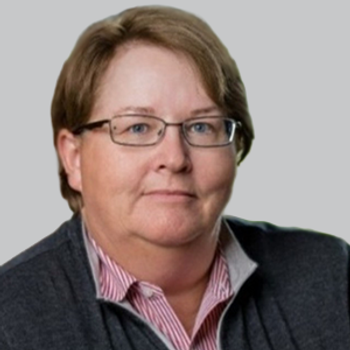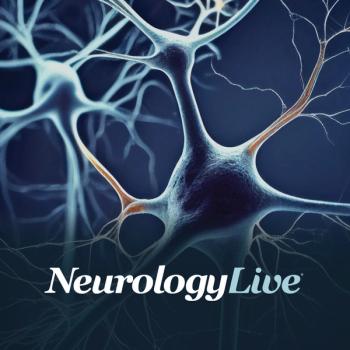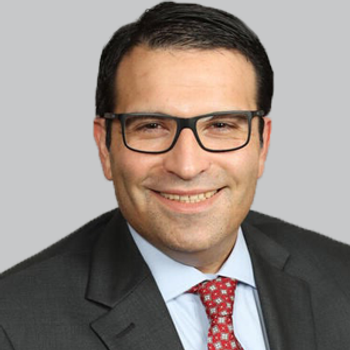
Highlights of AASM Guideline for Treatment of Central Disorders of Hypersomnolence
Coauthor and member of the American Academy of Sleep Medicine board of directors, Lynn Marie Trotti, MD, MSc, discussed key takeaways from the new guideline, which encompasses the first updates since 2007.
Earlier this month, the American Academy of Sleep Medicine (AASM) announced a new guideline for the treatment of central disorders of hypersomnolence, outlining recommended medications for narcolepsy, idiopathic hypersomnia, Kleine-Levin syndrome, and hypersomnias secondary to medical disorders. Collaboration by a task force, commissioned by the AASM, developed the guideline using a systematic review and the Grading of Recommendations Assessment, Development and Evaluation (GRADE) system.
Lynn Marie Trotti, MD, MSc, a director of AASM and coauthor of the guidelines, sat down with NeurologyLive to outline the guideline and discuss upcoming research efforts within the sleep medicine space. Trotti, who is also associate professor of neurology at Emory University School of Medicine, commented on the recommendations, which were classified as either “strong” or “conditional,” based on the evaluated evidence.
Key updates include the inclusion of new FDA-approved medications, namely solriamfetol (Sunosi; Jazz) and pitolisant (Wakix; Harmony), for treatment of narcolepsy, and medication recommendations for pediatric narcolepsy, which were not included in the previous guideline. Although the guideline was developed for clinical use, it is also useful for patients, Trotti said, allowing them to understand and guide their own care.
NeurologyLive: Can you provide an outline of the new guideline and any key recommendations?
Lynn Marie Trotti, MD, MSc: This is a guideline covering the full range of central disorders of hypersomnolence, at least those for which we were able to make evidence-based recommendations. There are recommendations for adult in pediatric narcolepsy, there are recommendations for idiopathic hypersomnia, and Kleine-Levin syndrome, and then there are recommendations for hypersomnia due to medical or neurologic disorders as well.
The biggest changes, I would say from the existing guideline, that the AASM has for these disorders, is probably the new medications that are included in this guideline that were not available at the time of the prior guideline. In particular, that includes solriamfetol and pitolisant, both of which were FDA-approved for narcolepsy in 2019. Both of those medications now have strong recommendations for the treatment of narcolepsy in adults in this guideline. Pitolisant additionally has a conditional recommendation for the treatment of idiopathic hypersomnia in adults.
Another thing that's different about this guideline compared to the old guideline is that the prior guideline didn't specifically make recommendations for children beyond just a comment on potential medication safety in children. Whereas in this guideline, there are separate adult narcolepsy and pediatric narcolepsy recommendations. For pediatric narcolepsy, the guideline only has 2 conditional recommendations based on the strength of the available evidence, and that's for modafinil and sodium oxybate.
In this guideline, we were able to make several strong recommendations based on available evidence, particularly within adult narcolepsy and in idiopathic hypersomnia. For all the other disorders, there were only conditional recommendations. But within adult narcolepsy, there are strong recommendations for the use of modafinil, sodium oxybate, and then pitolisant and solriamfetol, as I mentioned earlier. In idiopathic hypersomnia, there is a strong recommendation for the use of modafinil.
What prompted the update?
The AASM actually has a process by which they review all of the evidence on a regular basis for topics covered in existing guidelines, as a way of making sure that when there's new data, a new guideline process can be formed to address that, as well as a process to look for new topics that need to be covered in guidelines. So really what prompted this guideline was just that the data have advanced quite a bit since the prior guideline, and so it was time—there was enough new information, both with new drugs, but also studies of older drugs, that didn't exist previously that warranted this new guideline.
How might this update help with awareness of sleep disorders among non-sleep specialists, namely neurologists and primary care providers?
Our hope certainly is that this guideline will inform providers on patient decision making for anyone anybody who treats patients with these disorders. As part of the guideline development process, the AASM reaches out to relevant organizations to see if they want to affirm or endorse the guideline. We were very pleased that this guideline was endorsed by a number of patient organizations like Wake Up Narcolepsy, the Narcolepsy Network, and the Hypersomnia Foundation to make sure that this information is accessible to patients so they can make informed decisions about their care, although it is written specifically for healthcare providers.
Also from a medical society standpoint, the guideline is endorsed by the Child Neurology Society and affirmed by the American Academy of Neurology. We want to get this out as broadly as possible to adult and pediatric neurologists, because these disorders, in many places, are taken care of by neurologists, even if those neurologists are not specifically sleep specialists.
Are there any other areas you are keeping an eye on in relation to sleep disorders?
This is a very active area of research right now, the treatment of excessive daytime sleepiness in central disorders of hypersomnolence. Even after we finish this guideline, even though it's brand new, since that time, the studies of lower sodium oxybate for narcolepsy were published, and the study of lower sodium oxybate on idiopathic hypersomnia should presumably be published soon. That medication was just given an FDA approval for the treatment of idiopathic hypersomnia, which is the first medication that's FDA approved for [that condition].
There are also a number of drugs that are in the drug development pipeline, looking at, in some cases, similar mechanisms but packaged in a different way—like once-a-night oxybate rather than twice-a-night oxybate—and in other cases, looking at really novel mechanisms—like hypocretin receptor agonism. Those drugs are pretty early in the development pipeline, so we'll see where they go, but it's very exciting that the treatment landscape, one, has as many options as it does right now, but in the future may have even more, so we can really do a better job of personalizing medicine and targeting full symptom control for patients with these disorders.
I will say also, as another plug for AASM guidelines, there was a recently published guideline on considerations for when to refer patients for surgical evaluation for the treatment of obstructive sleep apnea. In the central disorders of hypersomnolence sphere, there will be protocol recommendations on how to do MSLT [Multiple Sleep Latency Test] and MWT [Maintenance of Wakefulness Test] testing for patients you suspect [may have] these disorders.
Transcript edited for clarity.
REFERENCES
1. Maski K, Trotti LM, Kotagal S, et al. Treatment of central disorders of hypersomnolence: an American Academy of Sleep Medicine clinical practice guideline. J Clin Sleep Med. Published online April 23, 2021. doi:10.5664/jcsm.9328
2. New guideline provides clinical recommendations for treating sleep disorders that cause excessive sleepiness. News release. American Academy of Sleep Medicine. August 3, 2021. Accessed August 19, 2021. https://aasm.org/new-guideline-provides-clinical-recommendations-treating-sleep-disorders-excessive-sleepiness/
Newsletter
Keep your finger on the pulse of neurology—subscribe to NeurologyLive for expert interviews, new data, and breakthrough treatment updates.


































